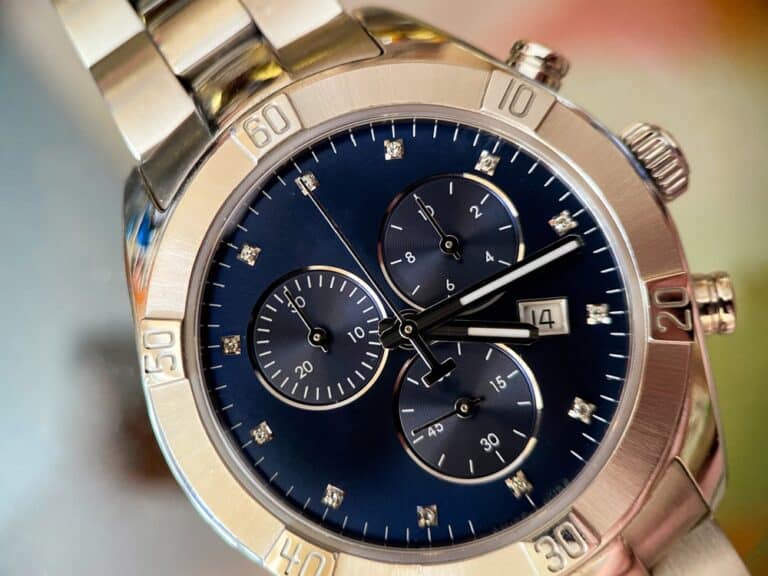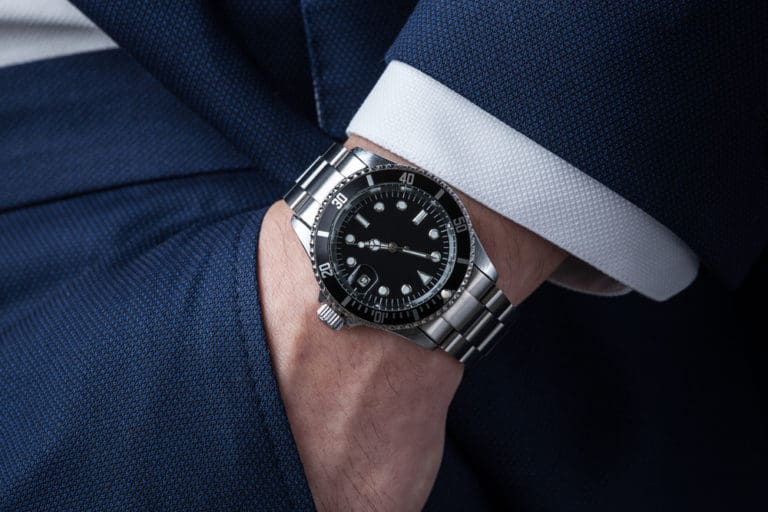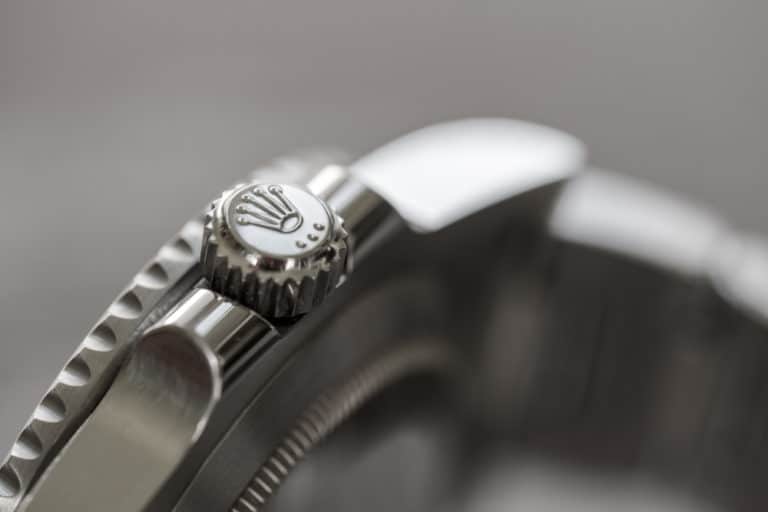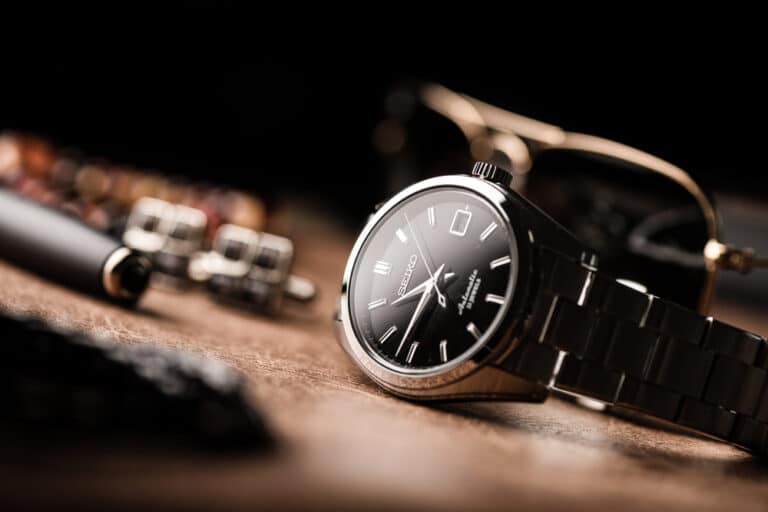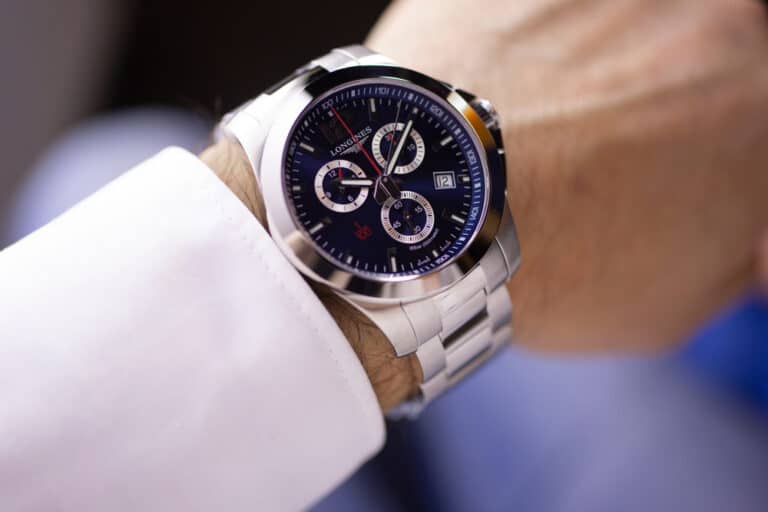A beautiful timepiece is an extension of your personality and will require some TLC every now and again. Taking a watch for a service will keep it ticking for generations, but how often do watches need to be serviced?
It is recommended to service a luxury watch every three to five years, but the service intervals will differ between watch brands. During a watch service, the entire watch is dismantled and ultrasonically cleaned. It is then lubricated, service parts replaced, and reassembled.
Read on to discover when a watch must be serviced, what is done during a service and how to keep a watch looking as good as new.
The Service Intervals Of A Mechanical Watch
The service intervals of a mechanical watch will vary depending on the brand and the complications in the watch. Most manufacturers will recommend servicing a mechanical watch every 3 to 5 years, but some only require a service after 10 years. This timeframe will be shortened if the watch is worn during physical activities or if it is worn daily.
A mechanical watch relies heavily on almost frictionless mechanics to operate. The key to this is the use of oil. Over time the oil will dry up and thicken, causing excess friction on the internal components. Automatic watches do not require as regular servicing due to fewer internal components. Below is a list of the top watch manufacturers and their recommended service intervals
- Patek Philippe – 3 to 5 years
- Breitling – 2 to 3 years
- Seiko – 3 years
- Rolex – 7 to 10 years
- Zenith – 1 to 2 years
- Audemars Piguet -5 years
- Richard Mille – 3 years
- Vacheron Constantin – 3 to 5 years
- Tag Heuer – 5 to 6 years
- Jaeger-LeCoultre 5 to 7 years
What Does A Watch Service Entail?
Servicing a watch may sound strange, but it is a great way to do preventive maintenance before something suddenly stops working. Once the watch has been handed in, a qualified watch technician will completely strip down the watch.
All the intricate components of the movement will be carefully dismantled. All the parts, including the watch case, bezel, and strap, are ultrasonically cleaned to remove any contaminants. The cleaning will be done by hand with a tiny brush for older and vintage watches.
After the initial cleaning, the watch face and bracelet will be polished to resemble a brand-new watch. Many owners will request that the polishing not be done to keep a vintage look. Others will want to keep all the imperfections as they hold great memories or a unique “no one will believe” this story.
Once cleaned and polished, all the components will be checked and replaced with new parts if needed. The watchmaker will carefully reassemble the movement of the watch. Lubrication will be applied where needed, and the movement will be tested. The remaining parts of the watch will then be put together.
If the watch is water resistant, a new gasket will be installed before sealing up the watch. The complete watch will then be tested. The watch will then be wound to the correct tension and allowed to run for a few hours to establish if all is working as intended.
What Are The Signs That A Watch Needs A Service?
Most watch brands will recommend servicing a watch every 3 to 5 years, but sometimes a watch may require one sooner. This will depend on how often the watch is worn and what activities it has been subjected to. A few indications let you know it is time for a service.
Moisture In The Watch
Moisture is the number one cause of damaged watches. The moisture can cause corrosion in the watch’s movement. A telltale sign of moisture in a watch will be condensation under the glass. This will indicate that the water sealing gasket is broken or has moved, thus allowing water to leak inside.
If you reside in a high-humidity climate, your watch will be more at risk. Servicing regularly will prevent any significant damage from occurring.
The Watch Gains Or Loses Time
It is natural for a timepiece to lose some time within a 24-hour period. The COSCs (Official Swiss Chronometer Testing Institute) standard is a maximum of 10 seconds per day. Any more than this indicates a fault with the watch’s movement.
Several reasons can cause a watch to lose time. If the watch has been exposed to a strong magnetic field, it will magnetize some of the intricate components of the watch. If the lubrication on the movement is dry, the friction will slow it down.
Loose Components Inside The watch
The first indication that something is not working as intended on the watch will be if the crown becomes stiff. Another telltale is if you shake the watch and there is a rattling noise coming from inside. This indicates that there is a spring that may be out of place.
Having the watch serviced will clean up all the components and reset or replace the springs, so the watch is as good as new.
How Long Will A Watch Service Take?
The duration of the watch service will depend on the dealer that will be sending the watch away, the brand of watch, and the work that must be done on the watch. The more complications the watch has, the more time must be spent on it.
The timeframe will increase if the watch must be returned to the manufacturer’s office in another country for repairs. Generally, a watch service can take anywhere from 4 weeks to 6 months to complete.
Is A Watch Service Covered Under The Warranty?
A watch brand will issue a warranty with the watch to assure the client that the product is not defective and will operate flawlessly. The warranty does not cover the cost of the watch’s service, even if it is within the specified time frame.
There are brands and authorized dealers that may include a servicing agreement with the purchase of the watch. This service agreement must not be mistaken for a warranty. A service contract is there to maintain the watch’s retail price and to have a record that indicates all the service intervals.
This is in the event the watch is sold to a new client, but the original factory warranty has elapsed; there is still a clear-cut record of the watch’s history.
Where Should A Watch Be Serviced?
The best place to hand a watch in to be serviced will be at the authorized dear it was purchased through. If this is not possible, the watch can be handed to any other authorized dealer of your choice.
Most authorized dealers will not send each watch off individually but, instead, wait for a few more watches and send them off in a group. This will add more delays to the timeframe in servicing the watch, but it is due to the insurance costs of transporting high-value items.
What Does A Watch Service Cost?
The price affiliated with a watch service will vary greatly. Each watch brand has its own pricing guide depending on the type of service, the number of complications, replacement parts needed, and the cleaning. The average cost of a mechanical watch can range from $150 to $1,500, depending on the type of watch.
For example, an Automatic Oris cleaning service is around $250. In contrast, a complete service on a multiple-complication Patek Philippe watch can exceed $2,000.

Do All Watches Need To Be Serviced?
Not all watches will require an in-depth service. Quarts watches have fewer moving parts and do not lose time, but they may require a dial clean or a new battery every few years. A digital watch has no moving parts and only needs a battery, but if you replace the battery, then why not do a deep clean.
Mechanical and automatic watches rely on the movement of many intricate components with very tight tolerances. Servicing these types of watches keeps them accurate and helps retain their value.
How To Maintain A Watch?
A watch service will restore a watch, so it is as good as the day it was purchased. It is still recommended to have a watch sent away for servicing as per the manufacturer’s guidelines. However, many things can be done to keep a watch in tip-top shape between services.
Clean The Watch
Use a lint-free soft cloth to remove any dirt or dust from the watch. If the watch is water resistant, use hand soap and water to remove any stubborn dirt. Do not submerge the watch if it has a leather strap.
Watch Services
Have the watch serviced as recommended by the manufacturer! Servicing will rectify any underlying problems that there may be with the movement, and preventative maintenance is always best.
Understanding How Water-Resistant A Watch Is
Never push the water resistance limits of a watch. There are specific dive watches capable of working at depths exceeding 300 feet. If the watch displays 50 meters (150′) water resistance, it is fine for a quick dip in a pool, but prolonged time submerged, such as when snorkeling, is not recommended.
Most watches will be able to deal with a few splashes of water on a daily basis as long as they are not submerged. If a watch is waterlogged, do not leave it in the sun to evaporate all the water. Water is not the thing that kills watches; it’s the minerals in the water that cause all the damage to a watch. If the water evaporates, all the mineral deposits are left behind. Take the watch to an Authorized dealer for repairs.
Scratches On The Crystal
The crystal is an important part of any watch. It keeps all the moisture and dust out while allowing the face of the watch to be viewed. The face will inevitably get scratched if the watch is worn daily, but the utmost care should be taken to prevent it.
Do not use any epoxy or glass repair remedies to mend the crystal. This will damage it further and void the warranty.
Store The Watch Correctly
If the watch is not worn, it should be stored in the box it came in. These boxes offer the best protection when the watch is not being used. If the watch is stored loose in a drawer or on a nightstand, it is more likely to get scratched or exposed to magnetism.
Keep The Watch Out Of Direct Sunlight
Keep a watch out of direct sunlight. The sun can cause the face, bezel, and bracelet to fade or discolor. Watches are not designed to operate under extreme heat conditions, especially mechanical watches, as the heat can cause the lubrication to break down prematurely. In quarts watches, the heat will significantly shorten the battery life.
Keep The Watch Clear Of Strong Chemicals
Using strong cleaning chemicals can cause unwanted discoloration of the watch. Perfumes and colognes are equally detrimental to a watch. It is recommended to let the perfume or cologne dry completely before placing the watch on your wrist.
The strong chemicals will not only discolor the watch but can penetrate the watch’s seals, allowing water to penetrate. Perfume or cologne will leave a gummy residue on a watch allowing more dust and dirt to become trapped in bracelet hinges, causing them to lock up.
Do Not Open The Watch
Opening a watch under the wrong conditions will expose the intricate mechanics to dirt and dust. This will severely shorten the life of the watch and void the warranty. If there are any problems with the watch, it will be best to take it to someone with the correct knowledge and tools. If the watch needs to be opened for some reason, send it in for a full service.
Understand Your Watch
Many people forget that there is an owner’s manual in the box. It is beneficial to read through the manual to get a complete understanding of all the watch’s functions. Not all watches are the same, and some functions will work differently. Instead, read the manual before simply turning crowns and pushing buttons.
Conclusion
A luxury watch should be serviced every 3 to 5 years. This will depend on the type of watch, the brand, and the number of complications it has. Some watch brands only recommend servicing their watches every 7 to 10 years, while others require much shorter intervals.
If the watch is not keeping time, has difficulty moving the crown, or if something is loose, the watch should be sent in for a full service. A watch service will make the watch as good as new.

